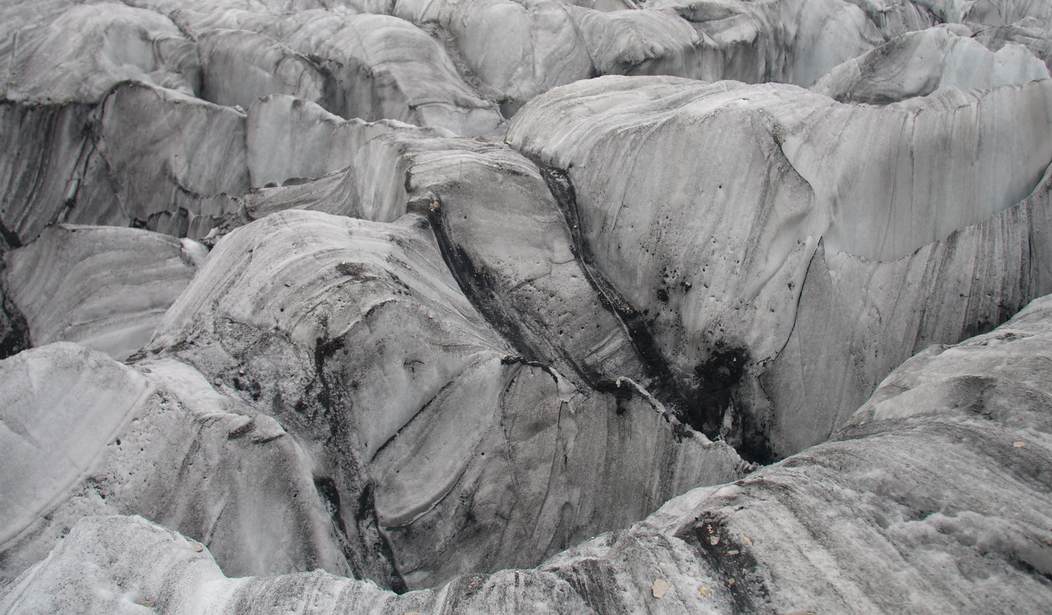In case you’ve lost sleep worrying about the latest reports of melting ice in Antarctica, go back to bed and enjoy a good snooze. There’s nothing to the story. Here’s why.
University of California, Davis professor Eric Rignot just published more data he asserts support the notion that the Thwaites ice shelf is in imminent danger of self-destruction. He further asserts "warm" ocean currents (that are not warm or even tepid by ordinary standards) have undercut the massive ice shelf that extends into the Amundsen Sea along the western margin of Antarctica.
This is what glaciers do. They creep downslope from higher elevation into lower geographic regions where latent heat finally causes them to melt, or, as in the example of an active ice shelf, they calve into a free-floating iceberg to drift with ocean currents carrying them equator-ward.
Dr. Rignot expects the media, along with lay readership, will readily accept his brand of climate alarmism.
I and others addressed this canard several years ago, but the principals, Rignot and allies, persist in efforts to persuade any who will pay attention and particularly those who issue grants to fund their research projects.
The West Antarctic ice sheet and its subsidiary Thwaites glacier overlie an active volcanic region of the Earth's crust. Volcanoes are observed, from seismic observations, to be venting beneath the surface of the glacial ice. This fact is conveniently ignored by the authors.
Independent studies have implicated, not so much the impinging sea currents, but geothermal heat rising upward through the crust from the mantle below as the likely cause of the observed melting of the ice shelf and anticipated calving of another large block of ice. Once freed from grounding and afloat, it will be referred to as an “ice berg.”
Recommended
But the process of melting at the terminus of a glacier, whether it be on land or at the edge of the ocean needs to be properly understood. Glacial ice flows (very slowly) down gradient under the influence of gravity (it behaves somewhat akin to a viscous fluid). In the instance of glaciers in Antarctica and Greenland, they continue their downhill courses until meeting the ocean where melting and calving of icebergs occur.
On arrival at the shoreline, the outward flow of ice, urged oceanward by additional glacial ice arriving behind it, forms an ice shelf often extending some distance out over the adjoining sea. The glacier behind continues to push outward until a portion of the shelf finally weakens and develops a crack. The crack deepens and a block of ice, if not securely grounded to land, breaks free and floats away as an iceberg. The 'berg then melts in warmer water as it is carried along toward the Equator by ocean currents. One such iceberg, after breaking free from Greenland in the North Atlantic, brought down the Titanic in April 1912.
The mass of ice (water) lost by calving is continuously being made up by sparse snowfall that falls across the broad expanse of highlands in the interior of the continent.
In fact, if the polar climate were to warm somewhat, the relative humidity would increase, inducing a higher precipitation rate over the interior. During past warmer periods (speaking relatively for Antarctica) increased snowfall is documented from the ice-core samples taken at the interior Vostok station operated by Russian scientists.
Counter intuitively, a warming climate over Antarctica (keeping in mind that most of its frigid interior never reaches a temperature above freezing) would result in the formation of more, not less snow falling on the affected polar ice cap, sufficient to make up for calving losses and helping to maintain a stable sea level.
Rignot points out correctly that if the entire West Antarctic ice shelf were to melt (irrespective of the primary cause), sea level would rise by an estimated two feet. That eventuality would cause disruption for human populations living in certain low-lying lands at a number of locations around the globe. But the overwhelming portion of Antarctica's landed ice is currently (and permanently) resident on the main continent that accounts for some 90% of all landed ice on the planet. Only the melting of landed ice would contribute to sea-level rise.
The Vostok corings also show that at no time during the past 600,000 years has Antarctica been ice free despite several prolonged interglacial periods when temperatures around the globe exceeded those experienced during the previous 10,000 years of the Holocene up to the present.
It is highly unlikely that any temperature rise that can be reasonably anticipated during the next century or two would be sufficient to cause significant melting of the main body of ice now covering Antarctica. The UN/IPCC climate models are shown to be not up to the task of making reliably accurate predictions and should be discounted.
In fact, it is believed by geologists that Antarctica has had a permanent ice cap for more than three million years, subsequent to the closing off of the Panamanian Strait that once separated North America and South America. The tectonic closing effected the termination of a prior free circulation of warmer equatorial water about the southern polar continent.
It is a futile and patently nonsensical effort to attempt to restrain climate change by enforcing draconian restrictions on usage of fossil fuels in order to lower CO2 emissions to the proposed net zero level being promoted by the UN/IPCC and the US government.
If every significant source of CO2 being emitted to the atmosphere were somehow to be eliminated (an impossible dream), the Thwaites ice shelf would quite possibly continue to melt because of the uncontrollable volcanism in progress beneath the ice.
We need less of the brand of climate fear-mongering that originates from academic centers in California and in many institutions elsewhere.
Will "Doomsday" arrive tomorrow for the Thwaites ice shelf or the entire West Antarctic ice cap for that matter? Not likely.
William D, Balgord, Ph.D. (geochemistry) heads Environmental & Resources Technology, Inc. in Middleton, WI.

























Join the conversation as a VIP Member